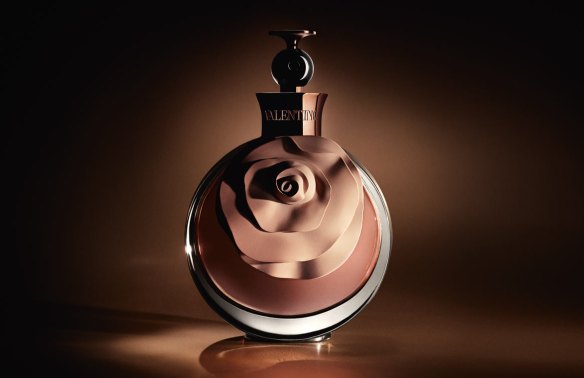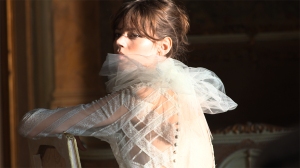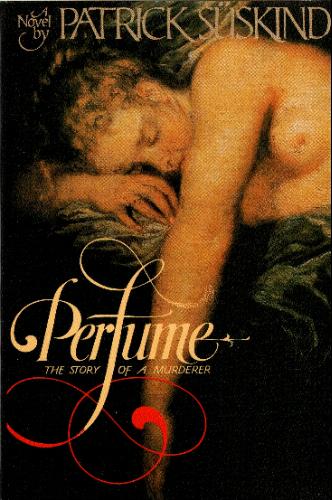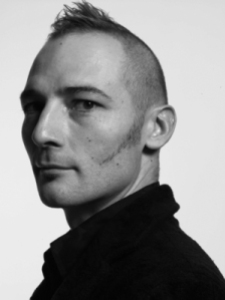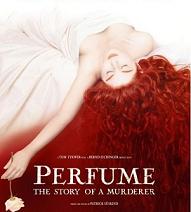As some of you know by now, one of my greatest passions in life is history. And perhaps few perfume houses have a greater history than Officina Profumo-Farmaceutica di Santa Maria Novella (or “Santa Maria Novella” for short). It is not very well-known, alas, so this review will be as much about the Santa Maria Novella’s impressive past as it will be about one of their colognes.
Santa Maria Novella is one of the oldest pharmacies in the world and, according to many accounts, the real, true source for the birth of cologne. A fully functioning pharmacy in Florence, it was founded in 1221 by Dominican friars. As the fame of their potions grew, the pharmacy was opened to the public in the 1400s and the Grand Duke of Tuscany conferred his patronage upon them, along with a gift of the Medici coat of arms.
In 1533, Santa Maria Novella’s fame exploded when they were commissioned to create a signature fragrance for the young, fourteen-year old Catherine de Medici upon her marriage to Henry II of France. As one magazine article explains:
Catherine de Medici, niece of Lorenzo the Magnificent (of Medici), in middle age. Artist: Unknown. Painting in the Uffizi Gallery, via Wikicommons.
Known as ‘Acqua della Regina’ or ‘Water of the Queen’, the resulting citrus-based cologne water of Calabrian bergamot could be interpreted as being the world’s first celebrity fragrance. It served to popularise the concept of perfume to the French royal court… The royal essence soon became a sweet smell of success wafting across the most fashionable courts – including England’s under Elizabeth I. The Officina’s original scent sensation helped lay the foundations for both the French and English perfume industry. In the West, the trend for scent was then maintained by other Italian perfume lovers, including Cosimo de’ Medici, Isabella and Alfonso d’Este, to Lucrezia Borgia.
The impact of “Water of the Queen” did not stop there. When a young perfumer, Giovanni Paolo Feminis, moved to Cologne, Germany in 1725, he took the scent with him and re-produced it to great acclaim. It was named Eau de Cologne in honour of the city, thus heralding the birth of the perfume concentration known today. The original Acqua della Regina scent is still made today by Santa Maria Novella and really deserves the true credit for creating “eau de cologne.”
The pharmacy is still in operation and still creating their perfumes based on formulae that are hundreds of years old, including their world-famous potpourri. The original workspaces and sales rooms are now part of a museum (which you can see in stunning photos here), and the perfumes are sold world-wide.
There is history in every fiber of Santa Maria Novella. An admiring article in the New York Times (written in 1986) talks about how little has changed at Santa Maria Novella since the 1400s:
In the pharmacy, one of several in Florence that dispense herbal potions, light filters through stained-glass windows onto the rows of essences: lime-colored heliotrope, myrtle like liquid sunshine and the nut-colored Marescialla. This last was named after the Marquise d’Aumont, wife of a French marshall, one of the last women ever to be burned at the stake as a witch. She used the essence to perfume her gloves.
Since the 1400’s, the Pharmacy of Santa Maria Novella has been making all kinds of perfumes, potions, powders and pomades, and nothing much seems to have changed in the intervening centuries except for the installation of a modern cash register; ”It’s hideous, isn’t it?” says Fiametta Stefani-Bernardini, one of the family of two sisters and a brother who run the pharmacy. ”But we have to have it, by law.”
The original monastery infirmary and pharmacy used to be in the rooms adjoining today’s shop, and you can ask to visit them, preferably when there are not too many customers in the pharmacy.
Here in the Sala Verde, or Green Room, and in the blue-and-gilt pharmacy, the clock stopped 400 years ago and the glass retorts, pestles, scales and measures once used by the monks are still in their cabinets, as well as bottles designed by Leonardo da Vinci. The pharmacy opens onto what used to be the cloister, now the parade ground of the local carabinieri detachment.
Some of the products are as old as the pharmacy itself, such as the Aceto dei Sette Ladri, or Seven Thieves’ Vinegar, named for a band of seven looters who would strip the bodies of the dead during the plague and who protected themselves from infection by rubbing this so-called vinegar over themselves. Today the aceto is sold as smelling salts, for which there seems to be a thriving market.
Between the scent of a Maréchal’s aristocrat wife who was one of the last women burned at the stake (in Paris in 1617), and the Seven Thieves’ Vineger intended to protect against the Black Death, my jaw dropped. May I emphasize once more that all these products are still available and made in the exact same formulation?
Equally impressive to me is the fact that supposedly “none of its products are tested on animals.” In fact, not only are the products “never tested on animals” but Santa Maria Novella even has a large Cat and Dog Grooming line. Lastly, whether it’s soaps, candles, bath products, lotions, or cologne, each batch is still made by hand and primarily from natural products. As one article points out, the “vast majority of the medicinal herbs used in its products are grown locally on the hills around Florence” and the products consist mainly of natural oils or essence.
With all this history (I really should have gotten my PhD in the subject, instead of being shipped off to law school), I naturally had to try one of the fragrances. I opted for Ambra which was first made in 1828 and which is categorized as an Oriental. Fragrantica describes it as follows:
a slightly dry composition of amber and with birch wood accents. Top notes: bergamot, lemon, bitter orange [bigarade] and neroli. Heart: jasmine, lavender and rosemary. Base: amber, birch, sandalwood and benzoin.
Birch is really the key to Ambra, a most unexpected, unusual, and, frankly, perplexing fragrance which was absolutely nothing like what I expected. Usually, I can get at least a vague sense of a perfume by looking at its notes. Not here. Ambra is primarily a herbal, woody birch fragrance, and only tangentially anything ambery or oriental. And it’s largely due to the birch note which runs through the life of Ambra’s development. According to Fragrantica, the odor of birch
comes from the literally “cooked” wood, as in birch tar, a phenolic, tarry smelling ingredient mostly used in the production of leather scents, some chypres and some masculine fragrances.
On my skin, Ambra’s opening is birch, more birch, a little more birch, and then some neroli. Bitter orange with bitter birch. It’s a fascinating combination, and a little bit odd, because the tree note smells simultaneously woody, smoky, minty, and a little bit mentholated like eucalyptus. At times, it almost feels a little bit like shoe polish cream. At other times, there are fleeting hints of something like diesel gasoline.
Minutes later, the strong pungent combination of bitter orange bigarade with that unusual woody element is joined by bergamot, lemon and lavender. The latter is a very strong and herbaceous, feeling a little like a lavender absolute or oil. Now, I’m not a fan of lavender but, here, the birch injects it with smoke and a tarry element, transforming it to something quite different. In fact, the twist on neroli and lavender brought by that powerful birch tree accord is quite inventive. Christopher Sheldrake has mentholated, camphorous eucalyptus as his signature for Serge Lutens fragrances, infusing it in everything from tuberose to patchouli, but you have to remember that Ambra’s formula is almost 200-years old and far preceded Mr. Sheldrake!
The smoky, woody, tarry, mentholated lavender-bigarade (neroli) combination is… disconcerting to me. I’m honestly not completely sure what to make of it. Something about it fascinates me and keeps drawing me in, despite my general loathing of lavender. It’s that incredibly smoky, woody feel which transforms the pestilential purple plant, my nemesis, into something oddly mesmerizing.
Just when I think I’ve decided that the cologne is almost verging on the soothing, it suddenly morphs into something else. Ninety minutes into Ambra’s development, sandalwood shows up! It happened both times that I tested the perfume, almost on the dot. The sandalwood is light and subtle, but it’s there. More importantly, the pungent, smoky, mentholated birch drops in volume by a significant degree, as if someone has flipped a switch. The perfume is now primarily neroli orange, infused with lavender, on a base of light sandalwood, smoke, and mentholated birch. I never smelled any jasmine or rosemary. There is the start of a light musky, almost powdery, note, but it is extremely faint. Ambra remains that way for another 90 minutes, slowly becoming lighter and more faded, turning mostly into a quiet, sheer amber. It dies completely just after the start of the 5th hour.
As noted above, Ambra is an eau de cologne, but it was surprisingly rugged for such a minimal concentration. I ascribe it all to the birch and the very potent orange neroli. Yet, despite that, Ambra has low projection. It hovers only a few inches above the skin for the first hour, before becoming a skin scent around the second hour. It is always incredibly light and airy in feel, but it was much stronger than I had expected.
There are few reviews in the blogosphere for Ambra. One admirer is The Perfume Critic who described Ambra as “[a] surprisingly long-lasting amber eau de cologne with noticable birch notes.” He wrote:
Pros: I love the addition of the birch note which adds an almost leathery tone to the composition; beautiful packaging and bottle.
Cons: Make sure you also purchase the spray adapter for your bottle so that you don’t have to use it as a splash! This adapter does not come with the bottle. [… ¶]
Reminds me of: Andy Tauer’s Lonestar Memories; Kolnisch Juchten. [¶]
… Although SMN considers Ambra an eau de cologne, I felt that there might actually be a stronger concentration of perfume oils – perhaps it’s really an Eau de Parfum? Maybe it was because I sprayed myself 6 times, or maybe it was because of the heat in the room where I was sitting, but this morning I found myself wondering what that amazing smell was…only to realize that it was me!
Wearing Ambra, I felt as if I should be stepping down from a stallion, riding crop in hand, having just returned from the hunt. I’m on my way to the library where my fellow hunters are milling around smoking their sweet pipe tobacco while sipping Scotch in crystal goblets: Ambra definitely has a vintage, old world feel about it. What most sets it apart from other amber aromas is the lack of the sweet vanilla note so often added to amber scents. Additionally, the birch tar note lends the feeling that both leather and smoke notes are part of the composition. […]
You know, I can completely see his scenario of the horseman returning from the hunt, before retreating to a smoky room to sip scotch. Ambra really does have an outdoorsy character, along with an old world feel. Now, it didn’t last quite so long on my perfume-consuming skin as it did on his, but then I didn’t use anywhere close to 6 sprays! I suspect that Ambra might easily have lasted longer had I used a greater quantity.
I think those who love neroli, lavender, and woodsy notes should try Ambra. Don’t expect a true amber fragrance, because you’ll be disappointed; the birch and aromatics are too dominant in the perfume’s development. On the other hand, if you’re looking for an unusual neroli or lavender — something that is quite soothing and relaxing at times, but with a twist — and a very airy, lightweight perfume that is ideal for hot temperatures, you may be very pleased. Ultimately, Ambra wasn’t for me because I struggle too much with lavender (which makes Santa Maria Novella’s Imperial Lavender completely out of the question), but I definitely would like to try their Patchouli, Opoponax (frankincense), and Orange Blossom colognes.
Even if Ambra doesn’t sound like your kind of thing, I would urge you to at least check out Santa Maria Novella’s enormous range of cruelty-free products, from personal care items to bath and body products, candles, children’s shampoos, room accessories, potpourri, and, even, olive oil! Because, seriously, how cool is it to have products once made by Dominican friars almost 800 years ago and associated with everything from Catherine de Medici to marauding thieves who fought off the Black Plague?!








